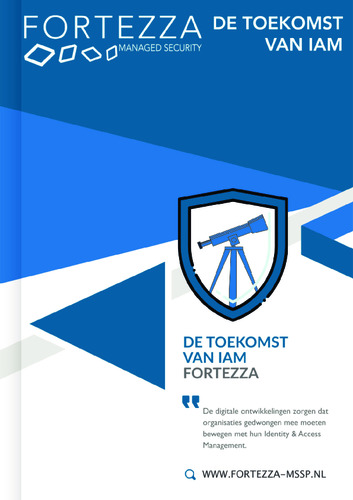- Home >
- Services >
- Access to Knowledge >
- Trend Monitor >
- Source of threat >
- Trend snippet: With the increasing desire and need to move to the Cloud IAM becomes even more important
Trends in Security Information
The HSD Trendmonitor is designed to provide access to relevant content on various subjects in the safety and security domain, to identify relevant developments and to connect knowledge and organisations. The safety and security domain encompasses a vast number of subjects. Four relevant taxonomies (type of threat or opportunity, victim, source of threat and domain of application) have been constructed in order to visualize all of these subjects. The taxonomies and related category descriptions have been carefully composed according to other taxonomies, European and international standards and our own expertise.
In order to identify safety and security related trends, relevant reports and HSD news articles are continuously scanned, analysed and classified by hand according to the four taxonomies. This results in a wide array of observations, which we call ‘Trend Snippets’. Multiple Trend Snippets combined can provide insights into safety and security trends. The size of the circles shows the relative weight of the topic, the filters can be used to further select the most relevant content for you. If you have an addition, question or remark, drop us a line at info@securitydelta.nl.
visible on larger screens only
Please expand your browser window.
Or enjoy this interactive application on your desktop or laptop.
With the increasing desire and need to move to the Cloud IAM becomes even more important
IAM IS TEGENWOORDIG meer dan het geautomatiseerd beheren van accounts en rechten. Bij de steeds grotere wens en noodzaak om naar de Cloud te verhuizen wordt een goede IAM nog belangrijker. Door kosten of complexiteit kan een organisatie niet alle applicaties of systemen gelijk overzetten naar de Cloud. Dat vroeg om een hybride oplossing waarbij de oude applicaties op locatie draaide en de nieuwe applicaties in de Cloud. Een hybride oplossing vereiste tevens een Hybride-identiteit. De reikwijdte is vanwege de hybride oplossing sterk vergroot. Voorbeelden zijn:
• lokale Identity Lifecycle Management (ILM) IAM en ILM in de Cloud;
• het “aantoonbaar in control” zijn door de verscherping van wet- en regelgeving zoals AVG, GDPR, ISO, NEN7510;
• ondersteuning van verouderde applicaties en het opzetten en mede ontwikkelen van nieuwe IAM-standaarden. Denk hierbij SAML een protocol voor het automatisch doorgeven van credentials om eenvoudiger op SaaS-applicaties aan te loggen;
• de toegang tot applicaties, systemen en werkplekken maar ook beveiligen en bewaken van de toegang tot data en informatie (information security).
• realiseren van “één digitale identiteit” voor on-premise en in de Cloud. Eenmalig met één account en wachtwoord aanloggen op meerdere applicaties is hierbij mogelijk;
• naast het aanloggen met behulp van een wachtwoord levert IAM een additionele authenticatie methode waarbij je naast je wachtwoord ook andere specifieke persoonskenmerken (biometrie) gebruikt of hulpmiddelen (tokens). Dit heet Multifactor authentication (MFA) en maakt het identificeren van personen betrouwbaarder, zeker in de Cloud.




